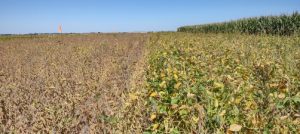NASA Continues Work on Advanced Air Mobility Systems With Aircraft Noise Study
Air taxis stand as a transformative force in the realm of air transportation, and NASA is at the forefront, actively collaborating with industry partners to address a critical concern—aircraft noise in urban communities. This marks NASA’s second round of testing in partnership with Moog, a significant step toward realizing the vision of Advanced Air Mobility (AAM) and its promise of a safe, accessible, and affordable new air transportation system.
In 2022, NASA initiated noise data acquisition during an initial round of piloted testing with Moog. The Moog vehicle, hovering in place, underwent rigorous evaluations, contributing valuable insights. This collaborative effort is part of NASA’s Revolutionary Vertical Lift Technology (RVLT) project under the Advanced Air Vehicles Program, aligning with the overarching AAM mission’s objectives.
Noise levels associated with new aircraft, particularly air taxis and delivery drones, are a major concern for the public. Addressing this concern, NASA’s AAM mission collaborates with private sector developers of electric vertical take-off and landing (eVTOL) aircraft. Moog SureFly is a key partner in this endeavor.
During the summer of 2022, researchers from NASA’s Glenn Research Center ventured to Cincinnati Municipal Airport–Lunken Field. There, they meticulously collected noise data while the Moog SureFly vehicle hovered above an array of 28 ground-level microphones. The data acquired during these tests serves a crucial purpose—it aids in the development of design tools that manufacturers can employ to mitigate noise impacts.
The insights gained from this testing phase are instrumental in refining aircraft designs, increasing the likelihood of community acceptance, especially in locations designated as vertiports—areas where eVTOLs will take off, fly, and land. These vertiports are critical components of the evolving AAM infrastructure.
As the AAM mission looks into the future of air transportation, one key question emerges—where will AAM vehicles, predominantly eVTOLs, take off and land? The answer involves a careful examination of existing infrastructure, including airports and heliports.
Additionally, NASA explores the integration of vertiports into urban landscapes, considering repurposed areas and structures like train or bus stations. Other proposed vertiports include repurposed top levels of parking garages and other “high-traffic” infrastructure installations that can hold the weight of proposed “air taxis.”
While initial eVTOL operations may occur at existing airports, the unique capabilities of these vehicles open up possibilities for landing on the tops of buildings and other unconventional spaces within crowded urban environments.
Several projects underpin the AAM mission, focusing on diverse elements to turn this vision into reality. These include automation, noise reduction, vertiport and vehicle design, and airspace design to ensure the safety of concurrent flights in the sky. The collaborative effort involves government agencies, industry partners, and the public, collectively working to establish the infrastructure for new “highways in the sky.”
NASA’s High Density Vertiplex (HDV): This subproject concentrates on developing a vertiport automation system. Utilizing small remotely piloted aircraft, the HDV team assesses how vertiport automation can enhance safety and operational efficiency. The project progresses from testing smaller remotely piloted aircraft to larger Vertical Takeoff and Landing (VTOL) aircraft, examining the interactions between automation systems, vertiports, and air traffic management.
System-Wide Safety: The System-Wide Safety project explores advanced safety management systems to reduce vertiport hazards and risks. This involves forecasting risk and evaluating navigation system performance. The project collaborates with HDV to apply research findings to address vertiport safety challenges effectively.
National Campaign’s Mobile Vertipad: The National Campaign subproject focuses on developing a Mobile Vertipad System. This system establishes common vertipad test methods to ensure consistency in NASA testing at different industry partner test sites nationwide. By integrating various avionics technologies and sensors into the vertipad surface, along with weather reporting systems, the goal is to enhance safety and precision during testing.
AAM Mission’s Vertiport Community Integration: The AAM mission actively engages with local communities to understand the direct impact of vertiport concepts, infrastructure, and design. Ecosystem Working Groups host information sessions to raise awareness and share insights, fostering collaboration between NASA and communities.
In the summer of 2023, NASA’s Glenn Research Center conducted tests at Springfield-Beckley Municipal Airport in Ohio, evaluating an eVTOL taxi produced by Moog. The tests involved data collection during departure, landing, and hovering at 60 feet. Operated remotely from a nearby ground station, the Moog eVTOL underwent rigorous evaluations. The data gathered from these tests will contribute to refining and validating noise prediction tools. NASA plans to provide both the tools and the dataset to the U.S. industry, fostering the design of quieter air taxis and drones.
NASA’s overarching vision is to create a safe, accessible, and affordable air transportation system in collaboration with industry, community partners, and the Federal Aviation Administration (FAA). This system aims to facilitate on-demand travel for passengers and cargo, leveraging innovative and automated aircraft. The focus on noise reduction is particularly crucial as air taxis and drones become integral parts of future airports, referred to as vertiports that will ideally be seamlessly integrated into both rural and urban landscapes.
This comprehensive research, conducted under NASA’s RVLT project, aligns with the AAM mission’s commitment to delivering data that guides the industry in developing electric air taxis and drones. As NASA continues to explore new frontiers in air transportation, the emphasis on noise reduction and community integration remains paramount. The collaborative efforts of NASA, industry partners, and local communities pave the way for a future where air mobility is not just advanced but also harmoniously integrated into our daily lives.








